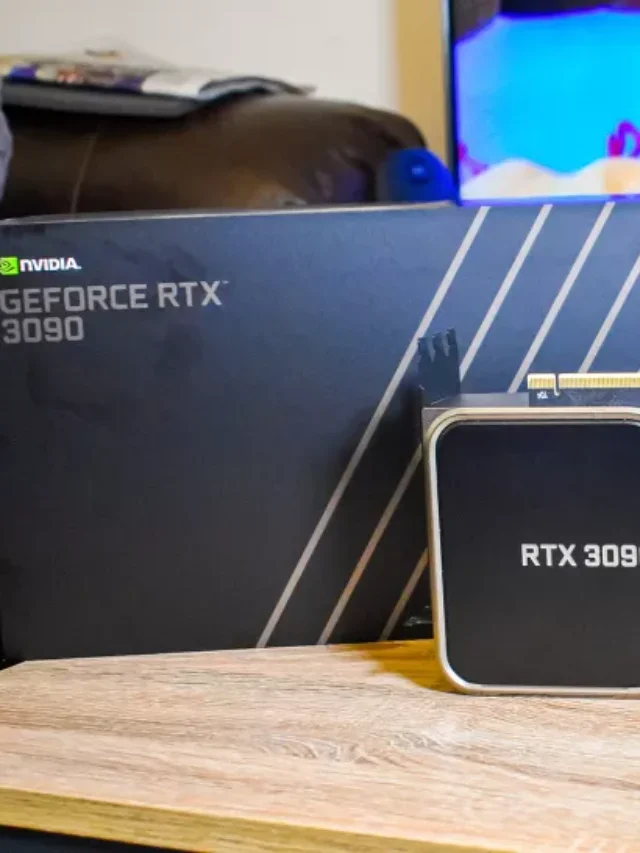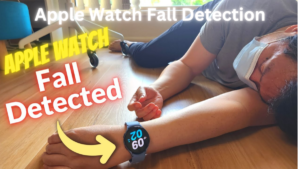“Boost Your Online Visibility: A Guide to Ranking Your Website on the First Page of Google and Bing”
Boost Your Online Visibility: Ranking a website on the first page of Google and Bing search results can be a challenging task, but with the right strategies in place, it’s possible to achieve high visibility and attract more traffic to your website. Here are some steps you can follow to rank your website on the first page of Google and Bing:
Keyword Research
Keyword research is an essential part of search engine optimization (SEO) and digital marketing. It involves identifying the terms and phrases that people use to search for products, services, and information online. By understanding the keywords that people use, businesses and marketers can create content that is more likely to rank well in search engine results pages (SERPs) and attract organic traffic.
Here are the steps involved in keyword research:
- Identify your target audience: Start by understanding your target audience and the problems or needs they have. What kind of information are they searching for? What are their pain points and challenges? This information will help you determine the types of keywords that are relevant to your business or brand.
- Generate a list of keywords: Use keyword research tools, such as Google Keyword Planner, SEMrush, or Ahrefs, to generate a list of relevant keywords. These tools can provide insights into the search volume, competition, and relevance of each keyword.
- Evaluate keyword relevance: Once you have a list of keywords, evaluate each one to determine its relevance to your business or brand. Consider factors such as search volume, competition, and relevance to your target audience.
- Prioritize keywords: Based on the information you have gathered, prioritize your keywords based on their relevance and potential impact. Focus on keywords that have high search volume, low competition, and strong relevance to your target audience.
- Create content around keywords: Use your prioritized keywords to create high-quality, keyword-optimized content that is relevant to your target audience. This can include blog posts, landing pages, and other types of content.
- Monitor and adjust: Regularly monitor the performance of your keyword-optimized content. Use analytics tools to track traffic and conversions, and adjust your keyword strategy as needed.
In conclusion, keyword research is a crucial component of SEO and digital marketing. By understanding the keywords that people use to search for products, services, and information online, businesses and marketers can create content that is more likely to attract organic traffic and drive conversions.
On-page Optimization
On-page optimization refers to the practice of optimizing individual web pages in order to rank higher and earn more relevant traffic in search engines. It involves optimizing various elements of a website, such as content, images, and HTML code, to make it more appealing to search engines and users alike.
Here are some key on-page optimization techniques:
- Title tags and meta descriptions: Title tags and meta descriptions are HTML elements that provide information about the content of a web page. They are used by search engines to understand what a page is about, and by users to determine if a page is relevant to their search query. Title tags and meta descriptions should be descriptive, concise, and include the target keyword.
- Content optimization: Content is one of the most important elements of on-page optimization. It should be high-quality, relevant, and optimized for the target keyword. This means using the target keyword in headings, subheadings, and throughout the text, while also ensuring that the content is readable and valuable to the user.
- Image optimization: Optimizing images can help improve the speed and performance of a website, and make it more appealing to search engines and users alike. This involves using descriptive, keyword-rich file names and alt text, as well as compressing images to reduce file size.
- URL structure: The URL structure of a website should be simple, descriptive, and include the target keyword. This helps search engines understand the content of a page, and makes it easier for users to remember and share the URL.
- Internal linking: Internal linking is the practice of linking from one page of a website to another. It helps search engines understand the structure of a website, and makes it easier for users to navigate and find the content they are looking for.
- Header tags: Header tags (H1, H2, H3, etc.) are HTML elements used to structure the content of a web page. They help search engines understand the hierarchy of information on a page, and make it easier for users to scan and understand the content.
- Mobile optimization: With more and more users accessing the internet on mobile devices, optimizing a website for mobile users is essential. This involves using a responsive design that adjusts to the device’s size and optimizing the content for mobile devices.
In conclusion, on-page optimization is an important aspect of search engine optimization (SEO). By optimizing the various elements of a website, businesses and marketers can improve the visibility and relevance of their website in search engine results pages (SERPs), and attract more relevant traffic and conversions.
Content Creation
Content creation refers to the process of developing and producing high-quality, relevant, and engaging content that is designed to inform, educate, or entertain a target audience. Regularly publishing new content can help you attract more traffic, improve your website’s ranking, and build your online authority. It is a critical component of digital marketing and can take many forms, including blog posts, videos, infographics, ebooks, and more.
Here are the steps involved in content creation:
- Define your target audience: The first step in creating effective content is to understand your target audience. Who are they? What are their interests, needs, and challenges? What kind of content are they looking for? This information will help you create content that is relevant and valuable to your target audience.
- Identify your content goals: What do you hope to achieve with your content? Do you want to educate your audience, build brand awareness, generate leads, or drive sales? Understanding your content goals will help you create content that is aligned with your overall marketing objectives.
- Conduct keyword research: Keyword research is the process of identifying the terms and phrases that people use to search for information online. By understanding the keywords that are relevant to your target audience, you can create content that is optimized for search engines and more likely to rank well in search results pages (SERPs).
- Plan and outline your content: Before you start writing, it is important to plan and outline your content. This will help you stay organized, ensure that your content is structured and easy to follow, and make the writing process more efficient.
- Write high-quality content: Once you have planned and outlined your content, it’s time to start writing. Make sure to write high-quality, original content that is relevant and valuable to your target audience. Use the target keyword in headings, subheadings, and throughout the text, while also ensuring that the content is readable and engaging.
- Optimize for search engines: In addition to writing high-quality content, it is important to optimize your content for search engines. This involves using the target keyword in the title tag, meta description, and throughout the text, as well as using header tags (H1, H2, H3, etc.) to structure the content.
- Promote your content: Once your content is created, it is important to promote it to reach your target audience. This can include sharing it on social media, email marketing, and other marketing channels, as well as leveraging influencer marketing and other tactics to drive traffic and engagement.
In conclusion, content creation is a critical component of digital marketing. By creating high-quality, relevant, and engaging content, businesses and marketers can build brand awareness, generate leads, and drive sales. To be effective, content creation requires a clear understanding of your target audience, a well-defined content strategy, and a commitment to creating and promoting high-quality content.
Link Building
Link Building: Build high-quality backlinks to your website from other relevant and authoritative websites. Backlinks are one of the most important ranking factors for Google and Bing, as they show search engines that other websites consider your content valuable and relevant.
Link building is the process of acquiring links from other websites to your own. This is an important part of search engine optimization (SEO) as links are one of the key factors that search engines use to determine the relevance and authority of a website. The more high-quality links a website has, the more likely it is to rank well in search engine results pages (SERPs).
Here are some key components of a successful link-building strategy:
- Relevant content: The first step to acquiring links is to create high-quality, relevant content that people will want to link to.
- Outreach: Reach out to websites and bloggers in your niche and ask for a link. Be sure to personalize your outreach and provide a compelling reason for them to link to your content.
- Guest posting: Reach out to websites in your niche and offer to write a guest post for them. Be sure to include a link back to your website in your author bio.
- Broken link building: Use tools such as Ahrefs or Moz to find broken links on websites in your niche. Reach out to the website owner and offer to replace the broken link with a link to your relevant content.
- Resource page link building: Find resource pages in your niche and reach out to the website owner with a request to include your website on the page.
- Infographics: Create informative and visually appealing infographics and reach out to websites in your niche to request a link.
- Testimonials: Reach out to businesses and websites in your niche and offer to provide a testimonial in exchange for a link.
- Link reclamation: Check your website for broken internal links and reach out to the website owners to request a link.
Link building is a long-term strategy and requires patience and persistence. However, with a well-planned and executed link-building strategy, you can significantly improve the visibility of your website in search engine results pages and attract more relevant traffic to your site.
Technical SEO
Technical SEO: Ensure that your website is technically optimized for search engines, including making sure it is mobile-friendly, has a fast loading speed, and has a proper sitemap and robots.txt file.
Technical SEO refers to the optimization of a website’s technical elements to improve its visibility and ranking in search engine results pages (SERPs). Technical SEO covers a wide range of topics, from website structure to server configurations, and is an essential component of a comprehensive search engine optimization (SEO) strategy.
Here are some key components of technical SEO:
- Website structure: Ensure that your website is structured in a way that makes it easy for both users and search engines to navigate. Use a clear and descriptive URL structure and include a sitemap.
- Mobile optimization: With the growing number of mobile users, it’s important to ensure that your website is optimized for mobile devices. This includes using responsive design and serving mobile-friendly content.
- Website speed: Page speed is an important factor in the user experience and can also impact your search engine rankings. Use tools like GTmetrix or PageSpeed Insights to measure your website’s speed and make improvements where necessary.
- SSL encryption: Use an SSL certificate to encrypt your website and protect sensitive user data.
- Duplicate content: Duplicate content can negatively impact your search engine rankings. Ensure that your website does not contain any duplicate content and use the rel=”canonical” tag to identify the preferred version of a page.
- Robots.txt: Use the robots.txt file to control which pages of your website are indexed by search engines.
- Sitemap: Submit a sitemap to search engines to help them understand the structure of your website.
- Schema markup: Use schema markup to provide search engines with additional information about the content on your website. This can help to improve your search engine rankings and provide users with more relevant results.
By focusing on technical SEO, you can improve the technical foundation of your website and make it easier for search engines to understand and index your content. This can lead to higher visibility in search engine results pages, increased traffic, and improved user engagement.
Local SEO
Local SEO: If your business has a physical location, make sure you have claimed your Google My Business listing and optimized your website for local search. This includes including your business’s name, address, and phone number (NAP) on your website, and building local citations.
Local SEO refers to the practice of optimizing a website and its online presence to rank higher in search engine results pages (SERPs) for local search queries. It is an important aspect of search engine optimization (SEO) that is designed to help local businesses reach their target audience and compete in their local market.
Here are the key elements of local SEO:
- Google My Business (GMB) listing: Google My Business is a free tool that allows businesses to manage their online presence on Google, including search and maps. By creating and verifying a GMB listing, businesses can ensure that they are visible in local search results and that their business information is accurate and up-to-date.
- NAP (Name, Address, Phone) consistency: NAP consistency refers to the accuracy and consistency of a business’s name, address, and phone number (NAP) across the web. This information should be consistent across all online directories, including GMB, Yelp, and other local directories.
- Local keyword optimization: Local keyword optimization involves using keywords that are relevant to a local business, and that target local search queries. This can include the business name, address, phone number, and other local keywords that are relevant to the business and its location.
- On-page optimization: On-page optimization refers to the practice of optimizing individual web pages for search engines and users. This includes optimizing the content, images, and HTML code of a website, as well as using header tags, meta descriptions, and other HTML elements to improve the visibility and relevance of a website in search results.
- User reviews: User reviews are an important factor in local SEO, as they help establish credibility and authority for a business. Encouraging customers to leave positive reviews on sites like Google, Yelp, and TripAdvisor can help improve a business’s local search ranking and attract more potential customers.
- Backlinks: Backlinks are links from other websites that point to a business’s website. They are an essential factor in SEO and can help improve the visibility and authority of a business’s website in search results. Backlinks from local websites, such as local directories, chambers of commerce, and other local organizations, can be especially valuable for local SEO.
In conclusion, local SEO is a critical aspect of digital marketing for local businesses. By optimizing their online presence for local search queries, businesses can reach their target audience, increase visibility, and compete in their local market. Effective local SEO requires a comprehensive strategy that includes a GMB listing, NAP consistency, local keyword optimization, on-page optimization, user reviews, and backlinks.
Social Media
Social Media: Promote your website and content on social media platforms, as this can help you attract more traffic and build your online authority.
Social media refers to a group of online platforms and websites that allow people to share and interact with content, opinions, and experiences. These platforms include Facebook, Twitter, Instagram, LinkedIn, and many others.
Here are some key components of a successful social media strategy:
- Define your goals: Determine what you want to achieve with your social media presence. Do you want to build brand awareness, drive traffic to your website, or engage with your audience?
- Choose your platforms: Decide which platforms are best suited to your goals and target audience. Not all platforms are right for every business, so choose carefully.
- Create a content calendar: Plan out your content in advance and stick to a consistent posting schedule. This will help you to stay organized and avoid missing opportunities to engage with your audience.
- Share high-quality content: Share content that is relevant, valuable, and engaging to your target audience. This includes a mix of original content and curated content from other sources.
- Engage with your audience: Encourage interaction and respond to comments and messages in a timely and professional manner. This helps to build a relationship with your followers and shows that you value their opinions.
- Monitor your metrics: Use tools such as Facebook Insights or Twitter Analytics to track your performance and measure the success of your efforts.
- Experiment and adapt: Social media is constantly evolving, so be open to trying new things and adjusting your strategy as needed.
By utilizing social media, you can connect with your target audience, build brand awareness, and drive engagement and traffic to your website. However, it’s important to remember that social media is a long-term strategy and requires patience, consistency, and a commitment to ongoing engagement and improvement.
Analyze and Monitor Results
Analyze and Monitor Results: Use tools like Google Analytics, SEMrush, or Moz Pro to monitor your website’s ranking, traffic, and backlink profile, and to make data-driven decisions about your SEO strategies.
By following these steps and consistently executing them, you can rank your website on the first page of Google and Bing search results and attract more traffic and leads to your website. However, it’s important to note that search engine optimization is a long-term strategy and requires consistent effort and commitment over time to achieve the desired results.
Analyzing and monitoring results is an important part of any marketing or advertising campaign, as it allows you to measure the success of your efforts and make data-driven decisions for future campaigns. Here are some key components of analyzing and monitoring results:
- Define your metrics: Determine the key metrics you want to track, such as website traffic, conversions, or engagement rates. This will help you to focus your efforts and measure success.
- Use tracking tools: Utilize tracking tools such as Google Analytics or SEMrush to monitor your metrics and track your progress over time.
- Monitor regularly: Regular monitoring is essential to understanding the impact of your efforts. Set up regular reports or dashboards to easily track your metrics and identify trends or changes.
- Analyze your data: Use the data you collect to identify trends, make comparisons, and draw conclusions about the success of your campaigns. This can help you to make informed decisions about future efforts.
- Identify areas for improvement: Use the insights from your analysis to identify areas for improvement and make changes to your campaigns as needed. This can help you to optimize your efforts and maximize your results.
- Test and refine: Continuously test and refine your campaigns based on your results. Try different strategies and approaches to see what works best for your audience and goals.
By analyzing and monitoring your results, you can ensure that you are making informed decisions about your campaigns and maximizing your results. This can lead to improved performance, increased engagement, and a higher return on investment for your marketing efforts.


















